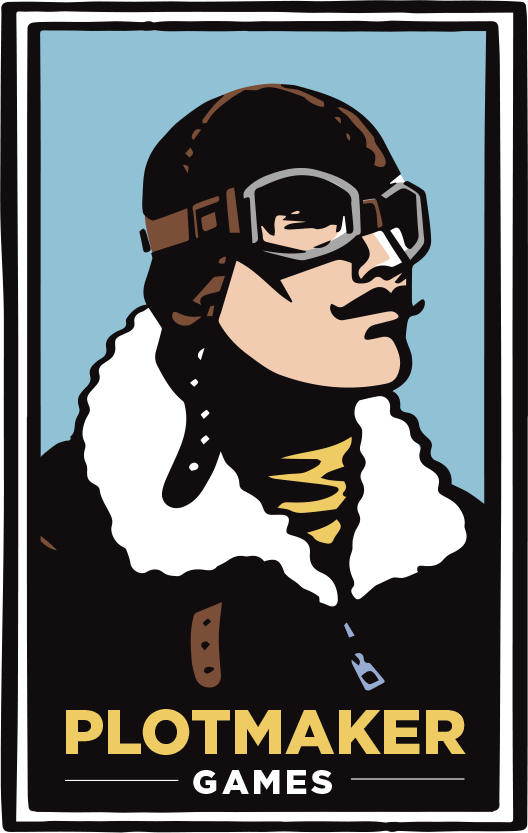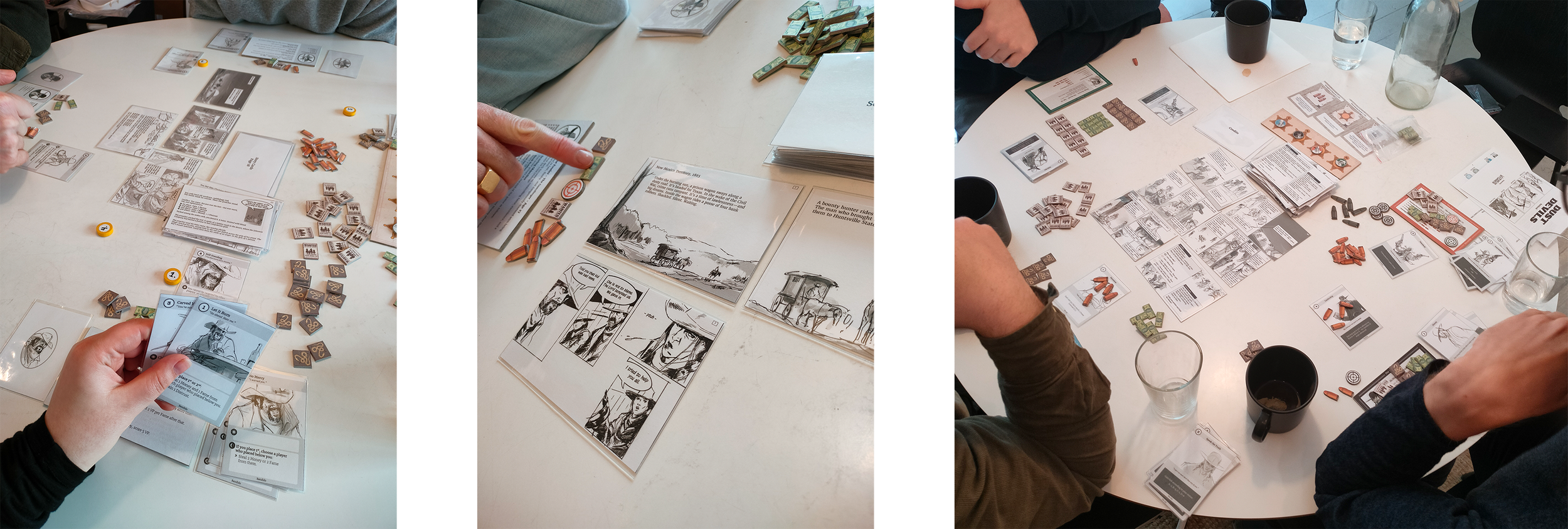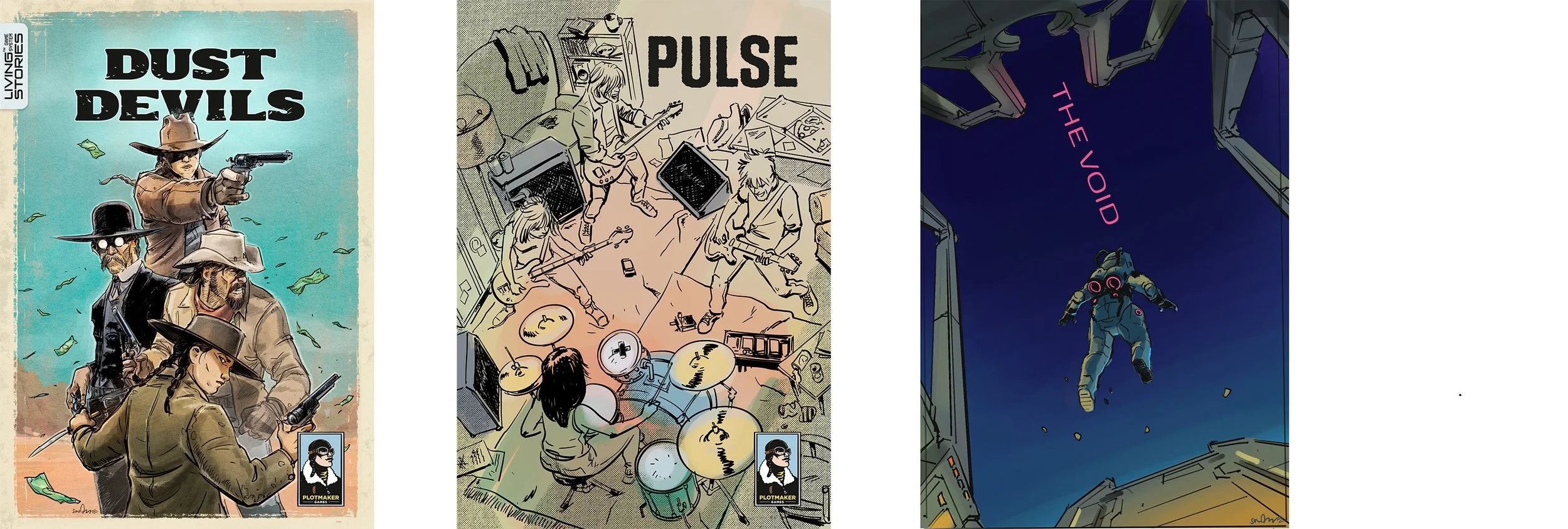The Making of Living Stories
Some ideas take years to ripen. Living Stories is one of them.
The seed was planted years ago, when I first played Time Stories and realized that board games could actually tell stories. Not just flavor — real stories. From then on, I kept toying with mechanics and concepts that might make it possible.
The most important spark, oddly enough, came from a tiny school game we made about loneliness, part of a series called Small Games About Big Feelings. Players took turns reading story cards, and every so often they had to choose how their character reacted — introverted or extroverted. That simple choice lit something in me. It showed that story mechanics could be both light to play and heavy with meaning.
One of the games in the Small Games About Big Feelings.
Months later, we tested a prototype about a U-boat searching for Atlantis. When the system clicked, we looked at each other and felt the hairs stand up on the back of our necks. We knew we were onto something.
Of course, the next day began weeks of smoke, fire, and frustration. That’s the creative process.
Why Now
So why only now, after all these years, does Living Stories exist?
Back then, we didn’t know enough. And we didn’t have the right team. It took ten years of designing tailor-made games for companies, of building Play Circle as our sister studio, and of learning how to actually ship pallets around the world. It also took the right people.
Emilie’s prototyping changed everything — her ability to turn sketches into high-quality, playable objects made it possible to test fast and test right. Snorre brought decades of scene-craft from the movie industry. Together, we finally had the balance of top-down design and bottom-up craft. And with the whole Plotmaker team focusing more of our time here (and less on Play Circle), we had the space to give Living Stories the attention it needed.
Only now do we have the skills, the team, and the time to make it real.
Different iterations of the Dust Devils prototype
At the Table
When you watch a Living Stories game, you see intensity. People lean forward as the bidding starts. There are sighs, gasps, and bursts of laughter as effects hit or miss. Bluffing, arguing, holding your breath until the last card is revealed — it feels less like a quiet board game night and more like watching a movie unfold with friends in the lead roles.
Playtesters trying to outwit each other in the bidding phase in Dust Devils
Not Another Puzzle
From the start, we knew what we didn’t want to do.
Not puzzles like Unlock! or Suspects. Not branching stories where the plot dies the moment you take the “wrong” choice. We wanted stories that obey the real laws of storytelling — the same structures I studied in literature and that Snorre knows instinctively from film: conflict, archetype, catharsis. Stories with the pull of myth, but told in a form you can hold in your hands.
The Engine
At its core, Living Stories is simple. We’ve learned from years of making games for companies and organizations that rules need to disappear fast — explainable in minutes, intuitive in play.
In Living Stories, each scene is a tug-of-war for resources — the fundamental values of the world. In Dust Devils, our first game, that means Money, Fame, Damnation, and Grit. Every character fights for them — though nobody’s eager to carry Damnation. Every conflict shifts them, and every choice has emotional impact.
Mechanically, players take turns playing a card from their hand. Its effect fires. Then everyone secretly bids resources to boost their card’s power. Outcomes are ranked from brutal to sweet. No ties. We learned that the hard way, over beers one Friday, when an infinity loop of “who goes now?” broke the game.
After nine such scenes, resources are tallied. The rules are light, but the drama is heavy.
Two Modes of Play
Because of how the engine works, every Living Stories game offers two ways to play.
Action Mode: a fast, tactical filler game where you mix a random set of scenes — a bank robbery, a shootout, a chase — and fight it out. The story emerges as you play, a loose sandbox, quick and competitive but still dripping with theme.
Story Mode: a full graphic novel in card form. Nine chapters in a cinematic arc, obeying the laws of storytelling, with characters whose fates are woven together. You don’t change the story. But it might change you.
Wave One
Living Stories is a game system.
The first wave has three titles. We start with Dust Devils — a Western tragedy about four outlaws chasing one last score, trying to outrun damnation. Next comes Pulse, a story about four kids forming a grunge band in the early ’90s, walking the line between success and selling out. And then The Void, a thriller about people adrift in life who sign up for a one-way space mission — into the great empty, and maybe something beyond it.
Finished cover for Dust Devils. Pulse and The Void are still in the works.
Each game is a different world, with different mechanical twists and features, but running on the same basic engine of character, conflict, and reward.
Storytelling for the 21st Century
We believe in stories. Around campfires, in novels, on streaming services, in games. Stories are how we see each other, mirror each other, breathe and touch. They’re old, but in a digital age, telling them in games feels new again — immediate, human, alive.
That’s what Living Stories is built to do: tell true stories at the table. Stories of cowboys, musicians, and astronauts. Stories of soldiers in the jungle, of kids on school trips, of pirates, zombies, neighbors, or countries in political conflict. Because a “character” in this system can be anyone — a person, a group, even a nation.
Character exploration for Dust Devils
The possibilities are endless. And we can’t wait to share the first stories with you around the table.





